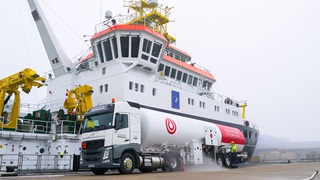
Liquefied natural gas remains the perfect solution for large energy users

LNG stands for Liquefied Natural Gas and refers to natural gas that has been cooled to -161.5 °C to turn it into liquid. Typically, LNG is 85 to 95-plus percent methane, along with a few percent ethane, propane, butane, pentane, and hexane molecules. Although a fossil fuel, it’s cleaner than other natural gases, producing 40% less CO2 than coal and 30% less than oil. LNG gas is non-toxic, non-corrosive, colorless, and odorless. LNG will NOT burn as a liquid.
Once processed, LNG takes up 600 times less space than gas and weighs less than water. This makes it easy to transport, typically by sea in heavily insulated, temperature-controlled tanks that keep the gas in a liquid state at around -162⁰C. The LNG container ship can be powered by boil-off gas.
LNG is made from natural gas extracted from fields located predominantly in countries such as Algeria, Australia, Nigeria, Norway, Qatar and the USA. To create LNG, natural gas must go through several stages of processing at onshore or offshore Liquefied Natural Gas plants.

Among LNG’s benefits, it’s better than any other fossil fuel for the environment and easier and cheaper to transport and store. It brings clean, reliable energy to businesses in areas that gas pipelines do not reach.
